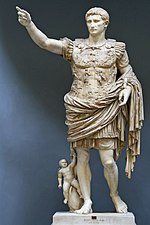Bramante Staircase
Buildings and structures in Vatican CityDouble spiral staircases

Bramante Staircase is the name given to two staircases in the Vatican Museums in the Vatican City State: the original stair, built in 1505, and a modern equivalent from 1932.
Excerpt from the Wikipedia article Bramante Staircase (License: CC BY-SA 3.0, Authors, Images).Bramante Staircase
Rampa dell'Archeologia,
Geographical coordinates (GPS) Address Nearby Places Show on map
Geographical coordinates (GPS)
| Latitude | Longitude |
|---|---|
| N 41.9064 ° | E 12.4544 ° |
Address
Musei Vaticani
Rampa dell'Archeologia
00120 , Vatican City
Vatican City
Open on Google Maps










